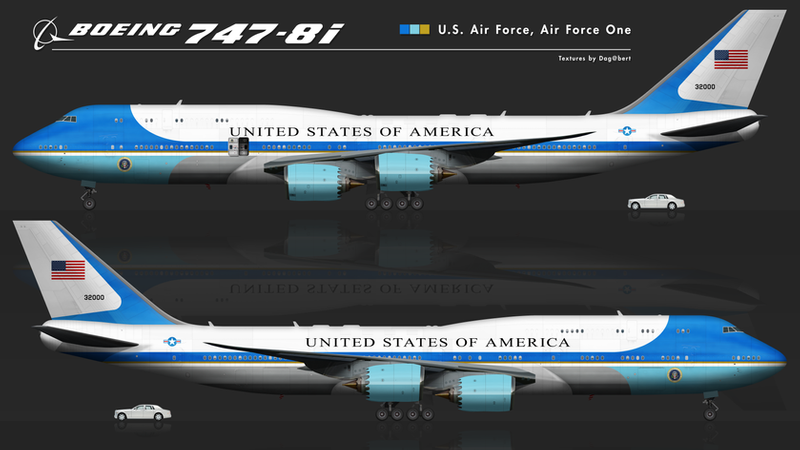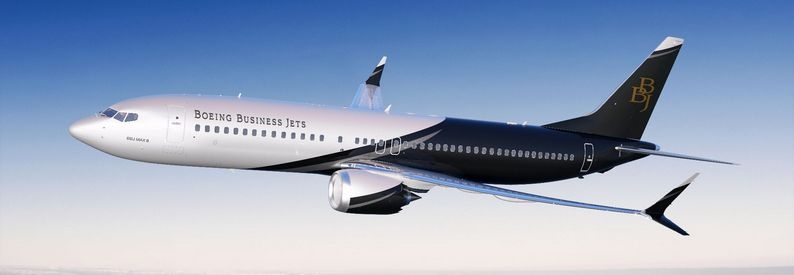World’s Top 10 Largest Private Jets in 2025

Most private jets carry fewer than ten passengers in cabins of just 200 to 300 square feet, but the world’s largest VIP aircraft redefine luxury air travel with tens of thousands of square feet of living space and seating for dozens.

At the pinnacle sits the Boeing Business Jet 747-8, a double-deck flying mansion offering 5,179 square feet of cabin area, a 250-foot length and nearly 9,000 nautical miles of nonstop range—enough to serve as Air Force One or transport a royal entourage halfway around the globe. Only eight of these factory-built VIP marvels have been sold, primarily to governments in Egypt, Kuwait, Brunei and Türkiye, and one is currently being repurposed as the next U.S. presidential jet. The 747 is no longer produced, former airliner could be modified and fitted with the desired interiors.
Boeing’s latest BBJ offer is the new BBJ 777-8 and BBJ 777-9 stand as Boeing’s flagship ultra-long-range business jets, blending extraordinary range with exceptional cabin volume. Engineered for nonstop intercontinental travel, the BBJ 777-8 can fly up to 11,835 nautical miles, while the larger BBJ 777-9 offers a range of 11,000 nautical miles. These aircraft redefine private aviation, enabling seamless travel between nearly any two cities on the planet while delivering a new standard of comfort, sophistication, and performance.
The next-generation BBJ 777X incorporates cutting-edge technology derived from the 787 Dreamliner, enhancing fuel efficiency, reducing emissions, and improving overall aerodynamics. The 777-8 prioritizes maximum range for ultra-long-haul missions, whereas the 777-9 provides increased cabin space and passenger capacity for those seeking elevated comfort. Although customer deliveries have yet to begin, the BBJ 777X family represents the future of ultra-long-range private aviation, offering lower operating costs, superior efficiency, and the most advanced engineering ever applied to a private widebody jet.
Close behind the 747-8 and the BBJ 777X is Airbus’s newest VIP airliner, the ACJ350-1000, which repackages the A350-1000’s advanced composite fuselage into a 3,315-square-foot flying palace. Four of the eight ordered by heads of state and ultra-high-net-worth individuals have already been delivered, including three to the German government outfitted with defensive systems and bespoke interiors by Lufthansa Technik. The ACJ350’s 11,100-nautical-mile range makes it a favorite for nonstop intercontinental missions.
Boeing secures another podium spot with the BBJ767-300ER, whose 3,050 square feet of flexible cabin can be tailored into private offices, lounges and bedrooms. Although fewer in number than their younger Dreamliner siblings, VIP 767s continue to serve presidential fleets in Saudi Arabia, Azerbaijan and Kazakhstan—and even Drake’s famed “Air Drake” sky-blue jet.

Fourth place belongs to the ACJ340-600, whose 2,782-square-foot interior and 8,500-nautical-mile range once made the four-engine A340 the unrivaled long-haul workhorse. Though most ACJ340s have now retired, a handful remain in service for governments seeking globe-spanning capability without refueling.
The BBJ787-10 Dreamliner enters fifth with 2,762 square feet, marrying the jet’s signature fuel efficiency and panoramic windows to corporate VIP comfort. While Boeing also offers the 787-8 and 787-9 as BBJs, customers often opt for the larger cabin of the -10 variant for its space and range.
The youngest giant on the list, the ACJ330neo, occupies sixth place with 2,325 square feet of cabin and 10,400 nautical miles of nonstop range. Its single -800 variant has yet to be delivered, but the promise of modern engines and state-of-the-art avionics has garnered strong interest.
Narrow-body BBJs appear in the lower half of the ranking. The 757-200 BBJ, with 1,800 square feet and 4,000 nautical miles of range, remains a rare but iconic choice—most famously flown by former U.S. President Donald Trump. The ACJ320neo family follows in eighth place: the A321-based variant stretches 146 feet to deliver 1,328 square feet and up to 4,000 nautical miles, blending regional-jet efficiency with executive-jet comfort.

Ninth-largest is the 737-9 BBJ, a VIP version of the 737-9 that offers 1,120 square feet and a 6,600-nautical-mile capability on select long-range missions. And rounding out the top ten is the ACJ TwoTwenty—Airbus’s corporate A220 variant—with 893 square feet of cabin and a range of 4,600 nautical miles, ideal for private shuttles between city pairs.
While these converted airliners dominate the ultra-large private-jet category, purpose-built long-range business jets aspire to join their ranks. Gulfstream’s G700 and Bombardier’s Global 7500 deliver hundreds of square feet on dedicated business-jet platforms, but no clean-sheet design yet matches the floor space of these airline-derived giants. In the coming years, however, newcomers like Boeing’s 777-8 and 777-9 BBJ promise to push cabin dimensions even further, ensuring that the sky’s limit continues to rise for those who demand the ultimate in airborne real estate.
Related News: https://airguide.info/category/air-travel-business/business-aviation/
